Ustrasana
What is Camel Pose (Ustrasana)?
Camel Position (Ustrasana) called as Ustra means Camel and Asana means Position or Posture. Therefore the name Camel Position. It is an intermediate-level back twisting, chest opener position. With the full spine twisted backward, the chest and upper abdomen look like the back of a Camel. Its origin is in modern yoga and a position introduced by the Iyengar yoga lineage.
It’s a part of our intermediate Iyengar series. In this position, stress is upon the thighs and the full-back, leaning backward and inwards. In this position, the body’s movement with perfect adjustment is essential. As the the back is arched to the maximum, and the connection of the breath with the movement of the back should happen very purposefully. The tail bone is slowly sent towards the navel and tightens the pelvic area. Make certain the lower abdomen is pulled in and upwards, thus allowing the lower spine to settle deeper inside, making the position more comfortable. The chest should be enlarged and contracted at the right time to move into the position. It is always good to have the guidance of an experienced teacher while learning this position for the first time.
Keeping in mind the dynamics of movement and the backbend this position is best circumvented by senior citizens, pregnant women, postnatal women, women during menstruation. It is a good exercise for gymnasts and dancers. Half Camel Position Twist Prep Flow (Ardha Ustrasana Parivrtta Prep Vinyasa), Reclined Supported Wide-Legged Thunderbolt Position Stomach Pumps Flow (Supta Salamba Pada Prasarita Varjasana Udara Pumps Vinyasa) and Kneeling Cat Swan Flow and Cat-Cow Position are good preparatory asanas and flows which increase the flexibility of the spine which can be done before Camel Position (Ustrasana). The camel Position is considered a base position as camel position variations can be derived from this position.
Camel Position (Ustrasana) is a great preparatory position to all advanced back twisting asanas like King Cobra Position (Raja Bhujangasana), Pigeon Position (Kapotasana), Pigeon Position B (Kapotasana B), Half Camel Position Variation Raised Toe (Ardha Ustrasana Variation Raised Toe), and the like of it. Camel Position helps boost energy in the body and therefore can be included in flow yoga series and is a good counter position to navasana (boat position).
Camel Position (Ustrasana) activates the heart chakra (Anahat Chakra) which is the energy center for self-love and universal love. The trainee first orient the body with breath in this position and solves the slight discomfort. This raises the person to open up the emotional discomfort to emotional washing. It teaches the character of giving, compassion, and caring in a person. The neck stretch restoratives the throat chakra which physically balances the thyroid glands and emotionally conducts clarity of communication in the trainer.
The camel Position is a backbend that stretches the whole anterior of the body. It is performed on the knees and is repeatedly used as preparation for deeper back-bends. Exercising Ustrasana daily can be a great way to relieve neck and back pain caused by slouching in the anterior of a computer or driving. Camel Position (Ustrasana) is a stimulating and beneficial backbend, heart-opening addition to your sequence that counteracts slouching and relieves lower back pain.
It is substance taking the time to do it well. The main thing to avoid with Ustrasana is misfiring into the position and taking the impact of the backbend in your neck or lower back. Instead, raise and lengthen your torso ahead you normally arch into the position. Keep some length and space onwards the back of the neck and the low back. It is also important to tune in to your breath as you detain this backbend, says Yoga Journal contributor Laura Christensen. Breath is a way to strap and directs our prana (life force).
It is difficult to feel confident and trust yourself if you don’t feel mighty interior or if you are cut off from the very energy that wake-up you, Christensen explains. Each of us restrains an incredible wellspring of power, but it is not always activated, and we don’t always feel it. Ustrasana opens the anterior of the body to invitational breath into the lungs.
What are the Health Benefits of Camel Pose?
As this yoga position makes the body be like the back of a Camel, and since the Camel has a strong back, this position too works on strengthening the back, allowing it a strong look and toning the muscles around the spine. Following are the Benefits of Camel Position (Ustrasana):
Stretches, Strengthens, Lengthens:
Camel Position stretches the front body (the chest, abdomen, quadriceps, groins, and the psoas muscles). It strengthen the glutes and the hamstrings muscles. In this position, the abdomen and the core are stretched to their sustainable best, and therefore it is a good counter- position to the boat position (navasana) where the core is operated with toning and strengthening. This position also fortifies the shoulders as the front chest opens up. The tone of the arms, shoulders, and legs help decrease the big belly and fat on the thighs. The neck is stretched in the backbend and it decreases the cervical strain creating flexibility. It also strengthens the shoulders. Strengthens back muscles. Stretches the deep hip flexors (psoas), Opens up the hips, abdomen, chest, and throat. Strengthens thighs and arms. Strengthens the legs.
Flexibility and Range of Motion/ Alignment and Posture:
Camel Position upgrades spinal mobility because, in our daily activities, we never challenge the spine to a backbend. We are probably to be sitting or slouching and curving our spine forward. We flex it in the opposite direction by doing a backbend, and this toning increases body posture. The digital lifestyle and desk-bound jobs give a lift to sore muscles in the mid and lower back and the stress in the shoulders and neck, resulting in needful posture. In camel posture, Ustrasana stretches the full body and strengthens the spine, thus correcting the bad posture and its ill results on the body and mind. The camel position successfully reduces fat from the stomach, thighs, arms, and hips, and it helps in shaping the body. Upgrades flexibility especially in the spine and also upgrades your posture.
Chest, Diaphragm, and Breath:
The segment of Camel Position is the chest opening. It stretches the chest muscles, increases blood circulation in the body, and fosters a healthy heart. The chest cavity is supplemented, and this results in cardiovascular fitness. The expansion of the diaphragm is beneficial for respiration. Respiratory disorders: Opens the chest, upgrading respiration.
Awareness and Focus (Concentration):
This position is subtly challenging. The trainer needs to be aware of the breath when undertaking the backbend. Students must do this action sensitively, so the shoulders or lower back are not jerked. After orienting, the practitioner needs to open the heart consciously and push the hips higher up in every breath. The initial discomfort obtains into settling after a while. The adjustment of the legs hip-width apart and the widening of the shoulders with the neck twist are important. This position needs focus to deliver also. The delivering of the arms, then slowly the backbend and settling to Vajrasana (Thunderbolt Position) without hurry but continuously is proportionately important.
Energizing, De-stressing, Relaxing:
Camel Position (Ustrasana) is constructive in detoxifying the body. It intensifies circulation to the digestive tract, thus upgrading digestion, appetite, and excretion of food. A successful digestive system energizes the body. Also, the backbend opens the chest and tones the spine, which reveals tensions and revitalizes the brain. A Quiet mind increases creativity, upgrades concentration, and generates a healthier stance. Energizes body and mind. Delivers tension in the ovaries.
Stimulation and Organs:
The camel position stretches the muscles of the neck region where the thyroid and parathyroid glands are situated. This stretching stimulates these glands and upgrades their functioning. Thus balancing the construction of thyroxin (A hormone accountable for metabolism and the health of the joints and bones of the body). This yoga position also restoratives the endocrine glands with abdominal stretching and alleviates diseases related to the ovaries, pineal glands, and testes. Etc. The uterus is toned, and the urogenital system of the body is obtained.
Therapeutic, Healing, and Ailments/Circulation and Systems:
Ustrasana works subtly but effectively to upgrade the digestive, respiratory, endocrine, lymphatic, skeletal, and circulatory systems. The chest opening increases the respiratory system, and illness related to it, like asthma and bronchitis, can be treated by this exercise. The abdominal stretch stimulates the digestive system and therapists can treat disorders like constipation, colitis, and lack of appetite with this position. It also benefits the reproductive system by directing the Genito-urinary disorder of the kidneys, urinary bladder, ovaries, testes, and prostate. It is effective to serve irregular mensuration and painful mensuration (the position should not be exercised during mensuration).
The neck stretch is successful in stimulating the thyroid and parathyroid glands. Therefore, hormonal disorders related to these glands can be used in this position. It is also effective in treating vocal disorders and spondylitis. The neck stretches also restorative the salivary glands and the lymph nodes. Activation of the salivary gland uses the first step of digestion and the activation of the lymph nodes help flush the toxins of the body. The spinal balance from the lumbar to the cervical spine enhances spinal health by toning the spinal muscles and gentling the nervous system.
Balance and Emotions:
Camel Position (Ustrasana) provides stamina, boosts self-esteem, and makes the trainee feel confident. It operates the heart chakra (Anahata) with the chest opening, which is the energy focus for self-love and universal love. The neck stretch stimulates the throat chakra (Vishuddha Chakra) which conducts in the simplicity of communication in the practitioner. Ustrasana is a wonderfully vulnerable posture that increases the acceptance of a person like the strength of a camel and benefits the mind. The physical exercise shifts the focus from the early slight physical discomfort to the slight emotional discomfort and then into the great emotional cleansing and mental simplicity that appears between perseverance. Complements overall health and well-being. Believe any person has a lot of emotional conflicts due to jealousy, selfishness, or dominating and lacks of communication. In that case, this position is like a waterfall that deterges them and gives them purity to the interface. Assists to heal and balancing the chakras.
Others:
It is a good exercise for gymnasts and dancers. It is a good position for teens and kids to develop strength of mind and body in the growing years. Camel’s Position can help build dependence and empowerment. It upgrades your posture and prevents the effects of prolonged sitting, slouching, and kyphosis (abnormal curvature of the spine). It may also help alleviate back pain. Camel Position stretches the anterior of the body including your abdomen, chest, shoulders, the anterior of your hips (hip flexors), and the anterior of your thighs (quadriceps). It also strengthens your back muscles, the back of your thighs (hamstrings), and buttocks (glutes). It upgrades spinal mobility as much of the day you are likely to be sitting or slouching and twisting your spine forward. By doing a backbend, you are hooking it in the opposite direction and it may help you develop better posture. It is said to open the heart chakra, which is your energy center for love, feeling, and compassion. Mild backache, Fatigue, Anxiety, and Reduced-fat on thighs. Helps overcome menstrual discomfort. Releases up the vertebrae. Tones organs of the abdomen, pelvis, and neck. Cures constipation. Complements overall health and well-being. Enlarges the abdominal region, improving digestion and erasure.
Preparatory Pose:
Camel Position (Ustrasana) is a great preparatory position to all advanced back twisting asanas like King Cobra Position (Raja Bhujangasana), Pigeon Position (Kapotasana), Pigeon Position B (Kapotasana B), Half Camel Position Variation Raised Toe (Ardha Ustrasana Variation Raised Toe), and the likes of it.
What are the Preparatory poses for Camel Pose (Ustrasana)?
As Camel Position (Ustrasana) is appraised as an intermediate-level position, the sequence of the yoga positions ahead of this position can also be from the intermediate level. They can be sequenced as below:
- Sun Salutation (Surya Namaskar)
- Parivrtta Trikonasana (Revolved Triangle Position)
- Navasana (Boat Position)
- Dhanurasana (Bow Position)
- Bhujangasana (Cobra Position)
- Salabhasana (Locust Position)
- Anjaneyasana (Low Lunge)
- Setu Bandha Sarvangasana (Bridge Position)
- Urdhva Mukha Shvanasana (Upward-Facing Dog Position)
Ustrasana works on the core, the full-back, a part of the legs, hip flexors, and shoulders. It is critical to perform some positions that involve all of these to master ustrasana in an injury-free method. Thus from beyond yoga positions, one can move into Camel Position (Ustrasana) without feeling any tightness around the spine muscles and shoulders. The beauty of Ustrasana can be accomplished only if the back is strong and malleable.
How to Perform Camel Pose (Ustrasana)?
Following are the step- by-step details for the exercise of the Camel Position (Ustrasana):
Start by standing in the center of the yoga mat. Starting both your knees be seated on your heels in Thunderbolt Position (Vajrasana). Seated in this position with hands on your thighs, take a few breaths, and lift your spine, pushing the lower back onto the heels under you.
Come on to your knees while lifting your body away from your heels and placing the back straight. One can take support by standing a blanket under your knees or folding the corner of the mat and placing it under your knees. Gape in the anterior and lift the body with a few breaths to focus. Ease in the tummy too. Now keep the knees hip-distance apart. The adjustment of the hips, knees, and feet should be absolute. Do not disparate your legs and feet beyond you more than the knees. Therefore the knees and ankles are in a straight line. Be conscious of relaxing your feet. Mention, Feet Curl Close Up. Place your hands under your hip beyond you with elbows pointing backward. Take the shoulders beyond you while holding your hips. Keep the thumbs pointing in the anterior and the other four fingers beyond, supporting the back. Take a few breaths here.
Lifting upwards with tummy inserted in and abdomen tight, slowly breathing, take the upper body beyond curved inwards and downwards. Make certain the thighs are tight and straight. The stretch in this position is from the thighs, and therefore having the thighs tight and vertical is compulsory. With deep inspiration, take both palms and place them on the heels beyond you. Here, lift the heart and chest upwards, conducting the spine insides and delivering the head and neck backward, feeling the neck stretch. Do this considerately, and do not overstretch in a hurry.
Start a slow breath, and conduct the mind to the lower back and neck as the maximum stretch is felt here. Try to push the spine extensive inside with every inspiration while the chest and heart reach giant.
The body’s weight should be evenly assisted by the legs and arms. After a few breaths, slowly expire and conduct the neck and shoulders to a comfortable position and release your hands and the full-back. Sit on your knees and heels again in Vajrasana (Thunderbolt Position) and modify.
Entirely relax in Child Position (Balasana). This action settles the blood rush to the head and moderates the spine. Importantly close your eyes in the final position. It eases staying in the position for a longer period and avoids dizziness.
How to Perform Ustrasana by Watching a Video?
What are Follow up poses for Camel Pose (Ustrasana)?
Since in Camel Position the back is stretched to its maximum at the intermediate level, the right flow of the yoga positions as a follow-up is very essential. The flow of energy from the yoga position Camel Position (Ustrasana) and the follow-up yoga positions should be intelligently done to modify the muscles around the spine the right way. These follow-up yoga positions are thus explained below:
- Balasana (Child’s Position)
- Uttana Shishosana (Puppy Dog Position)
- Supta Baddha Konasana (Reclining Bound Angle Position)
- Savasana (Corpse Position)
- Purvottanasana (Upward Plank Position)
- Bridge Position (Setubandha Sarvangasana)
- Supta Virasana (Reclining Hero Position)
- Paschimottanasana (Seated Forward Bend)
- Ananda Balasana (Happy Baby Position)
What are the Beginners tips in Camel Pose (Ustrasana)?
Avoid consuming the lower back: Don’t squeeze the buttocks or pooch the belly out. Make certain the knees are no wider than hip-width apart.
- Beginners very often are not able to touch their hands to their feet without straining their back or neck. First, try to turn your toes under and raise your heels. If this does not work, the next thing to do is to relax each hand on a block. Position the blocks just exterior each heel, and stand them at their highest height (usually about 9 inches). If you are still having difficulty, get a chair. Kneel for the position with your back to the chair, with your calves and feet under the seat and the anterior edge of the seat touching your buttocks. Then lean back and conduct your hands to the sides of the seat or high up on the anterior chair legs.
- If your hands don’t adequately outreach your heels use blocks on the side of each foot or place your hands on your hips instead.
- Try placing a block between your thighs and compressing it to activate your inner thighs Visualize raising your breast bone to the sky.
What is the Breath Awareness in Camel Pose?
Breathing with the back twisting backward and balancing the neck in the air essentials a bit of understanding of the flow of breath.
- As you inspire take the position by standing on your knees and legs with toes touching the ground and soles facing upwards.
- Inspire and keep both your arms on your hips and twist the back backward and downwards, slowly delivering the neck down and comfortable. Expand completely here.
- In this position, slowly breathe and raise the chest heavenwards and push the lower spine inwards, pushing the abdomen heavenwards and tightening the muscles around the abdomen.
- The slow breathing of inspiration and expiration should conduct the body to the proper position and adjustment conducting the body to a comfortable position.
- Every inhalation raises the chest and spine in and modifies the body with exhalation.
- After a few rounds of breathing in this position or as far as you can hold in this position, slowly come out of the position with a breath.
- Inspire and issue the neck first, slowly taking the hands one at a time from the heels and then conducting the body back to the initial position. Here you expire.
- Seated now on your knees and heels conduct the body to modify by stretching the body forward onto the ground with your forehead on the ground.
- Thus after Camel Position, remain in the relaxed position for some time until the muscles contract completely and the breath becomes normal.
What are the Types of Camel Pose?
In addition to the classic Ustrasana position, there exist the following variations and modifications.
There are Three types of camel positions.
- Ardha Ustrasana
- Ustrasana with a prop
- Modified Ustrasana
Ustrasana with a Prop:
Practitioners can place blocks on either side of their feet if they feel they require additional height to reach their ankles.
Modified Ustrasana:
If a practitioner is impotent to reach back and hold his feet, he can place his hands on his lower back with his fingers directing downwards. He must compress his elbows towards one another as this helps maintain this position.
Ardha Ustrasana (Half Camel Posture)
What is Ardha Ustrasana (Half Camel Posture)?
This position converts to the half camel position in English. The name is obtained from the Sanskrit Ardha means Half, Ustra means camel, and Asana means Position or Posture. It is perfect for those who are new to yoga and lack the elasticity needed to perform Ustrasana. Here, promoters twist backward and venture to hold their left ankle with their right hand (or vice versa) as against to holding both ankles with both hands.
Ardha Ustrasana is pronounced as ‘ Ardha-oosh-TRAHS-anna’. Ardha ustrasana is a heart opener, a backbend, and an anterior body stretch. It is an easy back-bending yoga position known to open Anahata (Heart chakra).
To enter this asana, start by kneeling upright on a yoga mat. A blanket can be added below the knees for additional cushioning. Safe-keeping the knees and calves at a 90-degree angle, then lower the right hand to touch the right heel. The left hand and arm extend up and back stretching the anterior body. The deepness of the back twist varies according to the elasticity of the yogi. If touching the heel of the foot feels too great, use a block next to the foot instead. After two to three breaths, mindfully exit the position and repeat on the opposite side.
Ardha ustrasana may also be referred to as half camel pose in English.
What are the Health Benefits of Ardha Ustrasana (Half Camel Posture)?
- Back pain: This is one of the effective yoga positions to treat back pain. The exercising of the half camel position gives a soothing stretching to the stiff spinal region and also makes it supple and flexible as well as the muscles associated with the spinal column. If you have neck pain, it should be achieved with care.
- Chest expansion: It helps to enlarge the chest with optimal thrust thereby beneficial in reducing congestion from these regions. Because of sufficient stretching, the lungs also get stretched thus smooths a suitable flow of oxygen in the lungs and the full body. This is one of the important yoga positions, which certains better respiration and good who have short of breath and aged people. Helps to expand chest size and lung capacity. Improves the function of the respiratory system. Beneficial for people agonizing from Asthma.
- Abdominal sides fat burning: If it is exercised as per the technique mentioned above and maintained the same for an ensured period, it gives suitable stretching to the abdomen and its side. Regular exercise may lead to more and faster metabolism of fats in these regions resulting in the thinning of dismissing extra fats from these abdominal regions.
- Spinal health: This is one of the best yoga positions for the health of spinal health as stretching leads to vertebral loosening and diminishes congestion.
- Boost immunity: The suitable stretching to the worried body parts leads to decongestant thereby flushing out the toxins and harmful substances from the body. Hence, this yoga may be exercised regularly to fight infections including coronavirus (COVID-19).
- Menstrual issues: This is a simple and simple yoga position, beneficial in case of menstrual difficulties. It should be exercised daily, especially by those ladies who are experiencing menstrual discomforts.
- Diabetes prevention: Patients who are undergoing sugar trouble, should exercise this yoga position regularly. It gives sufficient massage to the pancreas and its related muscles and certains secretion of insulin hormone, thus helpful in the management and avoidance of sugar.
- Aids in digestion: The exercise of the camel position is good to activate the enzymes and organs of the abdominal region. The secretion of essential digestive enzymes remain proper digestion and also relieve constipation.
- Thyroid prevention: The anterior of the neck is fully stretched, applying a good massage to the nerves and organs in this region. In certain, the all-the important thyroid gland is regulated.
- Others: Ardha Ustrasana is a learner-level yoga position that is performed in a sitting position. Ardha Ustrasana besides involves back-bend, Balance. Relieves backache, rounded back, and drooping shoulders. The anterior of the neck is fully stretched so it stimulates the thyroid gland. Escalates blood circulation to the brain. Helps to upgrade Posture. Improves digestion. Stretches and broadens chest, upgrade respiratory functions, people suffering from Asthma gets benefits. Stretches the abdominal area stimulates abdominal organs and upgrades the digestive and endocrine system. Increases blood circulation to the brain, upgrades concentration. Loosens stimulates spinal nerves, rounded neck, and drop shoulders. Half camel opens and stretches the upper arms and shoulder, and opens the chest. Half camel qualities the kidneys and stimulates the respiratory.
What are the Preparatory poses for Ardha Ustrasana (Half Camel Posture):
This start with the simple basic level position, it does not need any preparatory position. Therefore, the mastery of any back twisting positions will make this exercise is easier.
- Tadasana
- Ardh Chakrasana
- Bhujangasana
- Dhanurasana
- Salabhasana
- Setu Bandhasana
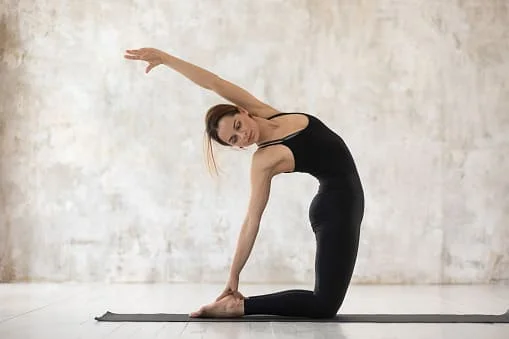
How to Perform Ardha Ustrasana (Half Camel Posture)?
Sit in the Hero position.
Keep the knees apart, quitting hip-width between them.
Stand on your knees.
Place both palms on the sacrum with fingers pointed down, inspire and lengthen the spine at the same time burning the knees down.
Expire and press the hips forward with your palms and twist backward. Make certain your arms support your weight.
Now, extend your right hand down to the right heel. Make certain you can maintain the balance, if not possible or you can not reach the heels, keep the hand on your sacrum.
Inspire. Straighten your left hand up and slowly move it backward. Once you feel it is secure, drop the head back with the support of your left hand. This can also be done by keeping both hands on the heels.
Take 3-6 breaths each time belongings the breath or up to 30 seconds.
Slowly, conduct both hands back to the sacrum, inspire up and let the head and back come vertical still standing on your knees. Release hips, waist and chest muscles and sit back on your heels.
Finally, join the knees. You are now sitting in the hero position, your original position. Repeat on another side. Repeat this 3-4 times.
What are Follow up poses for Ardha Ustrasana (Half Camel Posture):
One should take the exercise of any of the following forward bending positions after this exercise.
- Pascimottanasana
- Rabbit Position
- Pawanmuktasana
- Navasana
- Stickasana
- Halasana
- Uttanpadasana
- Ardhalasana
What are the Variations of Ardha Ustrasana (Half Camel Posture):
Have the upper arm extending up towards the ceiling rather than towards the back wall.
The lifted hand is kept vertical. The other hand is placed on the ground and the leg on that side is lifted.
In this variation, both hands are placed on the hip. The head and the cervical spine are arched back.
Below are some common variations of the yoga position Ardha Ustrasana with a base position as Camel Position (Ustrasana):
- Camel Position With Strap And Wall
- Kneeling Position Hands Chair
- Half Camel Position
- Sage Nahusha Position
- Camel Position Variation Unsupported Arms
- Kneeling Torso Circles Neck Stretch Position
- Pigeon Position B
- Camel Position Blocks
- Pigeon Position Chair
- Camel Position Wall Variation Over Folded Chair
- Supported Chair Camel Position
What are the Modifications in Ardha Ustrasana (Half Camel Posture):
Place a bent blanket under the knees and ankles to secure them from pressure and stress.
Tuck the toes under or use a yoga block if the hands cannot reach the heels.
What are the Precautions and Contraindications for the Ardha Ustrasana (Half Camel Posture):
Precautions:
Half Camel is not meant for pregnant ladies. Moreover, those who are having health conditions like hernia, lumbago, and other spinal issues should consult their doctor ahead of taking this exercise. For therapeutic considerations, one should resort to competent supervision.
Contraindication:
The exercising of Ardha ustrasana should be avoided in the following conditions. Some of the precautions are:
- High blood pressure
- Migraine
- Insomnia
- Enlarged thyroid
- People with severe back ailments such as lumbago
- Ardha Ustrasana is an apprentice-level yoga position that is performed in a sitting position.
- Ardha Ustrasana additionally involves back-bend, Balance.
- Hernia, or recent abdominal surgery.
- Recent or chronic knee, shoulder, neck, or low back injury or inflammation.
What are the Modifications and Variations in Camel Pose (Ustrasana):
Modifications:
- Taking the body into the Camel Position requires a flexible back and neck. But if one observes this position demanding for the back certain easy ways can be followed to exercise this yoga position.
- To avoid the impression on the lower back in this yoga position, you could use a chair by placing it close to your back and legs strike the inside of the legs of the chair. Here by resting some cushions on the chair, kneel in the anterior of the chair with your back close to the chair. Using the support of the arms of the chair, stretch your arms beyond you holding on to the arms of the chair, and take them back to the space of the chair.
Using the wall too as a support, you could conduct your full body close to the wall by kneeling anterior to the wall with your tummy close to the wall. - Pushing the wall with your tummy and gaining support, conduct the arms beyond and go backward. Make certain you have someone to help you with this, if you are testing it for the first time.
You could start with just one arm, exercising with one arm lifted and the other twisted backward while stocks on the heels will give you a slow confidence with the back. After recurrent exercise with both arms, you could move to the full Camel Position.
If someone has a neck that is rigid or is finding it difficult to “push” it down, then originally you could use some support by placing a stool which is cushioned just close to the neck. You could region this stool close to the wall to circumvent it from slipping.
For sensitive knees, you could support the knees with some thick blankets or cushions to allow that extra confidence.
If the arms don’t reach for the heels or the ground, you could take them beyond you and place them on the wall or a chair placed beyond you.
Thus after exercising these variations you could obtain confidence and thus move into the actual yoga position to acquire the maximum benefit.
Variations:
You can work on the opening in the chest, raising your breast bone as you inspire, shoulder blades firm on the back. Keep your hands on the lower back for support and pay observation to keep length in the lumbar area. Try this position with the anterior of your body against a wall. Keep pressing the thighs to the wall as you twist backward. If you can certainly take hold of your heels try pointing your toes back instead of tucking them below.
Under are some common variations of the yoga position Camel Position with the base position as Camel Position (Ustrasana).
- Camel Position
- Camel Position Variation 1
- Camel Position Variation Hands-On Floor
- Kneeling Position Arms Raised
- Kneeling Position
- Half Camel Position Variation Head Up
- Camel Position Blocks
- Kneeling Position Hands To Back
- Half Camel Position
- Camel Position Variation Toes
- Kneeling Position Arms Raised Revolved Flow
What are the Precautions and Contraindications for the Camel Pose (Ustrasana):
Precaution:
You should not do Camel Position if you have had an injury or chronic difficulty with your knees, shoulders, neck, or back.
Don’t strengthen your body into the position ahead it is elastic sufficient to do so without straining. Twist back only as far as you can naturally. With resumed exercise, you will moderately build your elasticity to achieve the position.
Contraindications:
Following are the Contraindications of Camel Pose (Ustrasana):
Injury and Surgery:
Practitioners with knee, neck, spine, ankle, wrist, and ankle injuries have to circumvent this position, as all the above- said joints are active in this position. Also, people who have encountered knee, hip, and spinal surgeries need to avoid this position to avoid strain and further restitution.
Lack of Body-Breath Connections:
Practitioners who lack body-breath connections should circumvent this position. The right adjustment of the knees, feet, and then the breath consciousness to take the backbend is very much needed. Without this coordination, they may bang their lower back and knee joints. Similarly, even releasing the position is tender with body awareness. Yoga teachers need first to inform the students about this concept.
Physical Strength and Weak Body:
Students with high blood pressure, migraine, or nervous diseases like epilepsy need to avoid this position. The neck stretch and the backbend gushes animation up to the brain, which is not preferable for such people. Practitioners with vertigo and balancing matters also need to avoid the position because it may exasperate the dizziness. The jugular vein and the carotid artery are below pressure which is stressful for such patients(carotid arteries are a pair of blood vessels discovered on both sides of the neck that bring blood to the brain. The jugular vein and the main arteries in this region are attached. The jugular vein is one of the several veins in the neck that drains anoxia blood from the face, brain, and neck, and comes again to the heart). People who encounter herniated discs, acute back pain, and advanced spondylitis cannot take the compulsion of this backbend. Students with trauma and anxiety need to completely avoid this position as it is physically demanding and it is an emotion-releasing position that they cannot handle. It is a vulnerable position that opens up feelings, and people who have undergone trauma need to be treated considerately. Depending on their trauma, this position can be emotionally great, and it can conduct up deep-seated emotions.
Others:
Keeping in mind the dynamics of movement and the backbend this position is best circumvented by senior citizens, pregnant women, postnatal women, women during menstruation.
Therapy and Restorative:
Yoga teachers need to appreciate that this Camel Position (Ustrasana) has to be used as therapy for digestive, re-productory diseases or back strengthening only on suitable students who have strong bones, joints, and musculoskeletal systems. Students with enervated bodies or senior citizens cannot be put at possibility by using this position as therapy.
What are the dos and Don’ts in Camel Pose (Ustrasana):
Do’s:
- The most comfortable variation
- Push the hips forward, demanding to keep the thighs parallel
- Open the chest
Don’ts:
- Drop the hips
What are the Common Mistakes in Camel Pose (Ustrasana):
Not Keeping Your Thighs Upright:
One of the most common problems in camels is keeping the thighs honest. As you take the chest back, you want to make certain that your thighs are not backing it and stopping up slanting back instead of staying fully vertical. To check if this is happening, take your position over to a wall. Set up with the anterior of your thighs on the wall. As you reach back, make certain that your thighs and even your hip points stay in contact with the wall the whole time.
Not Reaching Your Heels:
You may find that you can not reach your heels as simply when you monitor your thigh position. If this is the case, modify your grip by taking one of the heel variations described under. This is a good exercise for both starting point and advanced students.


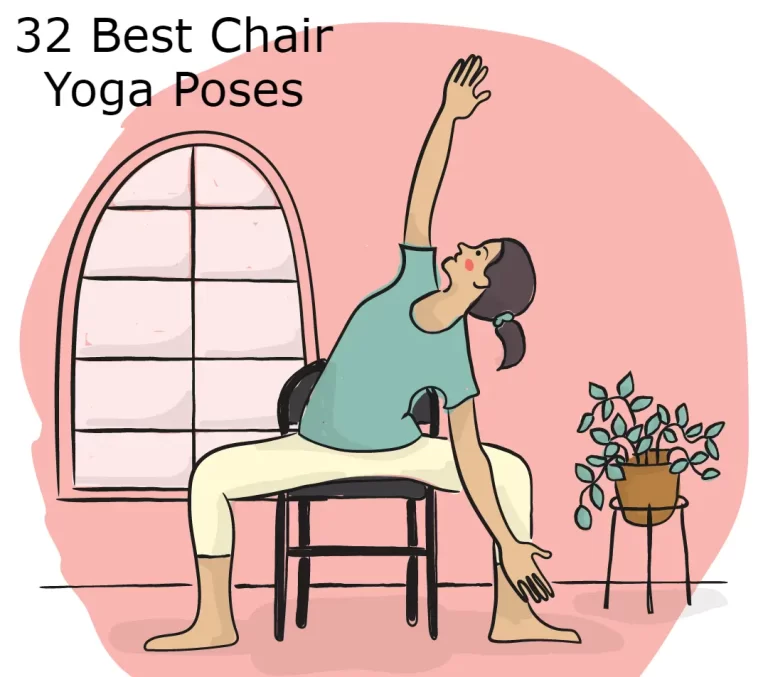

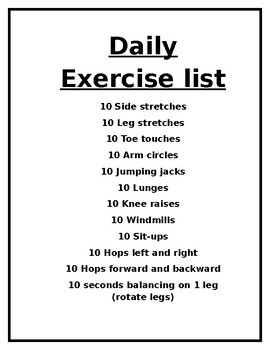
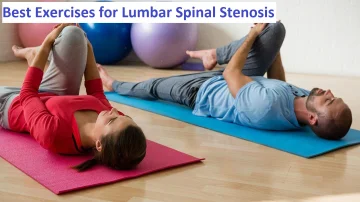
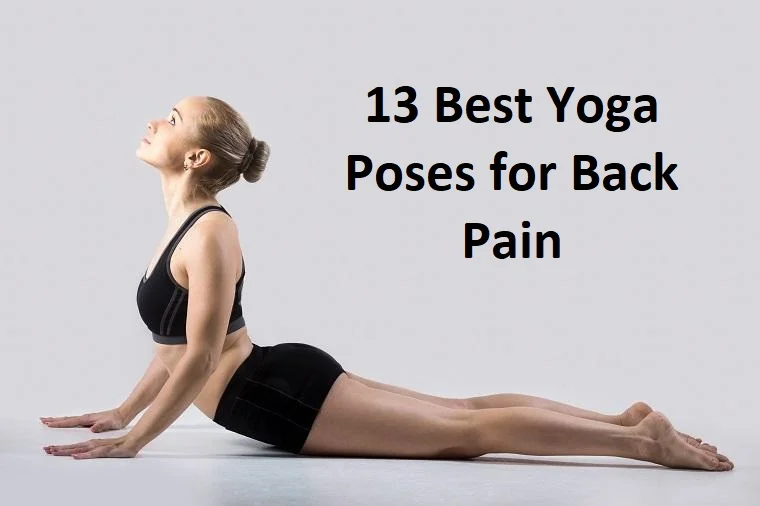
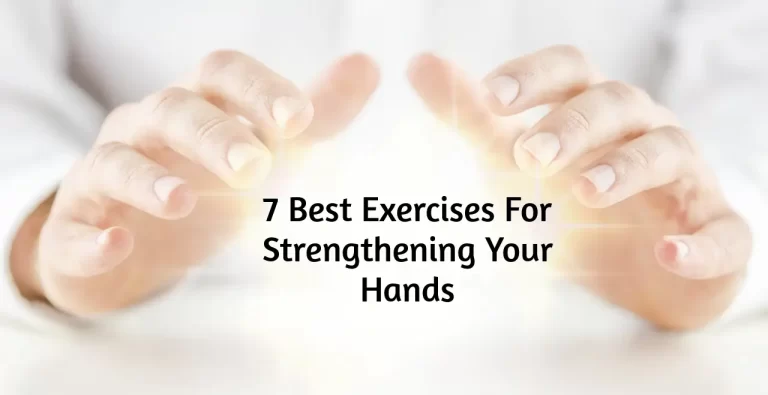
3 Comments